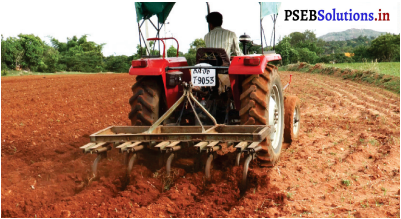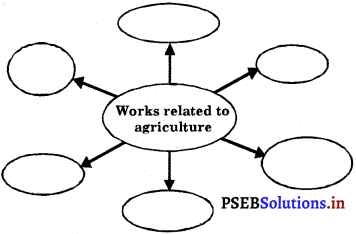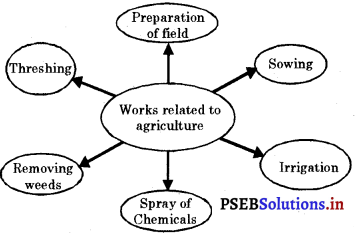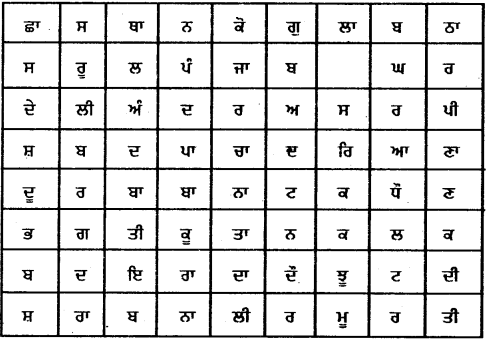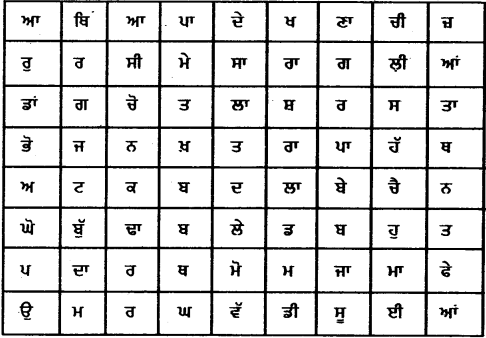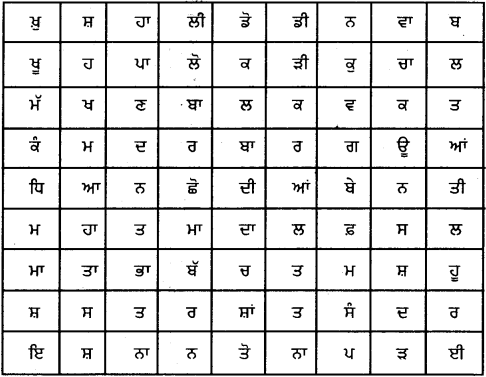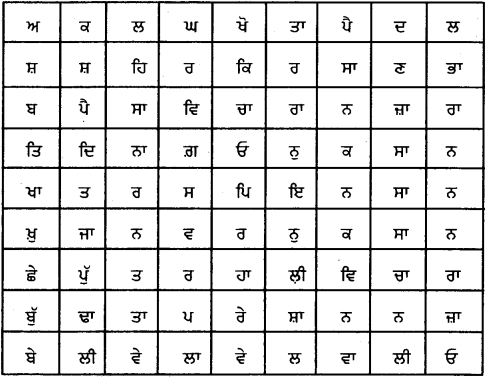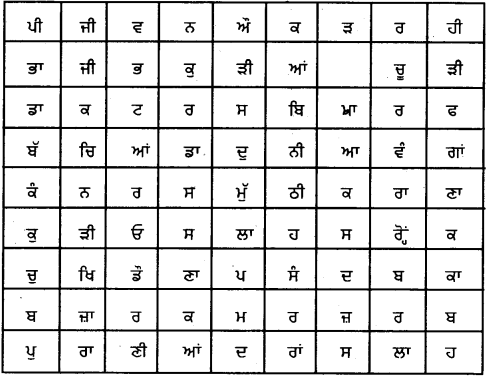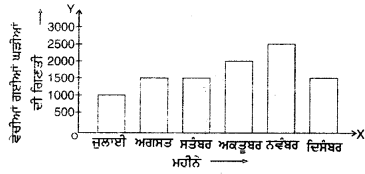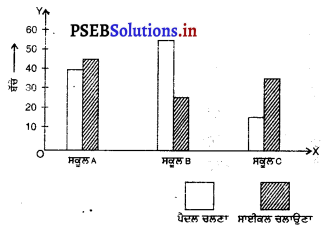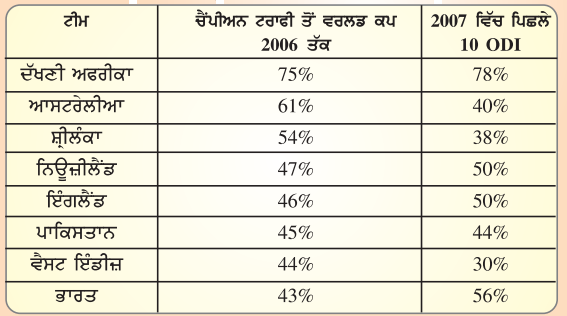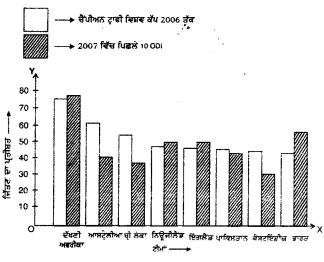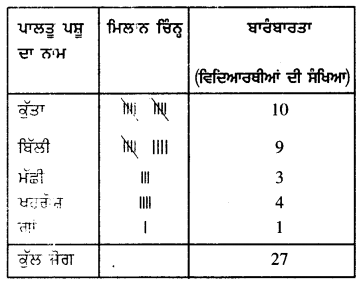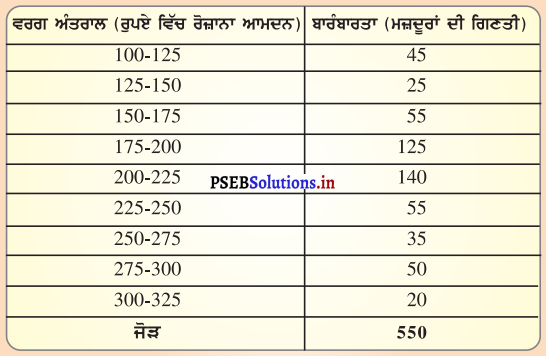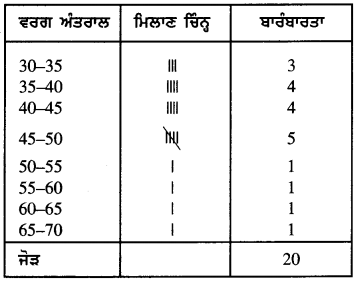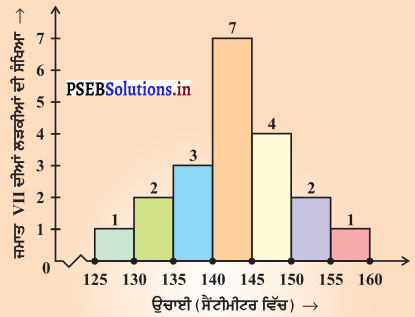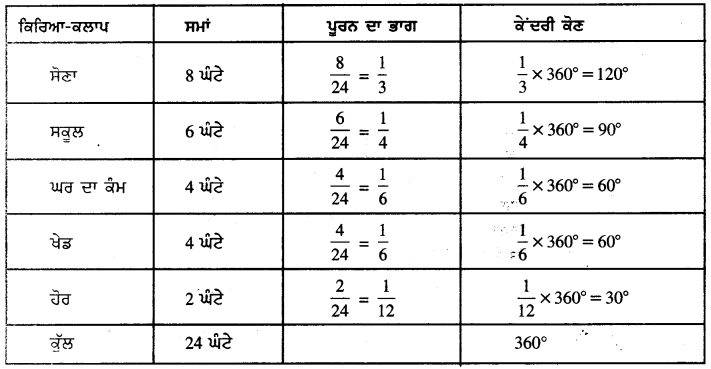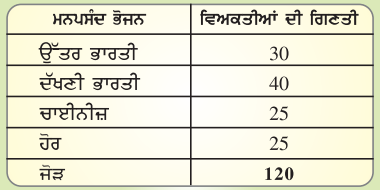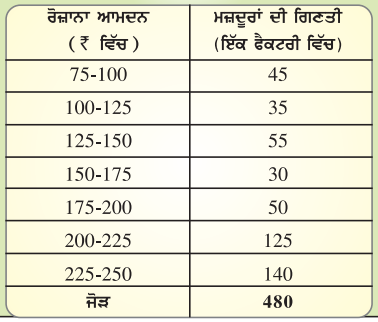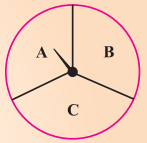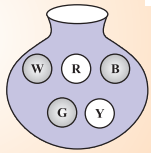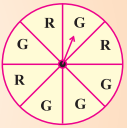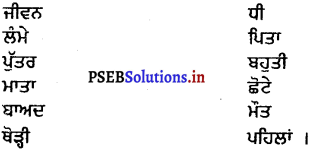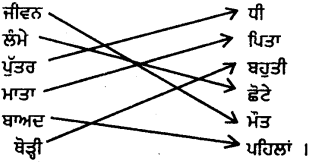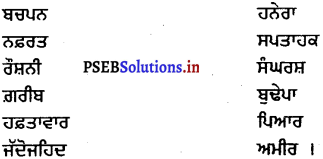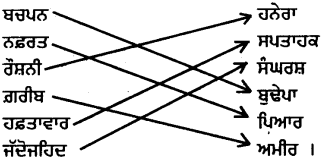Punjab State Board PSEB 6th Class Punjabi Book Solutions Punjabi Grammar Visheshan ਵਿਸ਼ੇਸ਼ਣ Exercise Questions and Answers.
PSEB 6th Class Hindi Punjabi Grammar ਵਿਸ਼ੇਸ਼ਣ (1st Language)
ਪ੍ਰਸ਼ਨ 1.
ਵਿਸ਼ੇਸ਼ਣ ਕੀ ਹੁੰਦਾ ਹੈ ? ਇਹ ਕਿੰਨੀ ਪ੍ਰਕਾਰ ਦੇ ਹੁੰਦੇ ਹਨ ?
ਜਾਂ
ਵਿਸ਼ੇਸ਼ਣ ਦੀ ਪਰਿਭਾਸ਼ਾ ਦੱਸੋ ਤੇ ਉਸਦੀਆਂ ਕਿਸਮਾਂ ਬਾਰੇ ਜਾਣਕਾਰੀ ਦਿਓ !
ਉੱਤਰ :
ਉਹ ਸ਼ਬਦ, ਜੋ ਕਿਸੇ ਨਾਂਵ ਜਾਂ ਪੜਨਾਂਵ ਦੇ ਗੁਣ, ਔਗੁਣ, ਵਿਸ਼ੇਸ਼ਤਾ ਜਾਂ ਗਿਣਤੀ ਮਿਣਤੀ ਦੱਸਣ, ਉਨ੍ਹਾਂ ਨੂੰ ‘ਵਿਸ਼ੇਸ਼ਣ’ ਆਖਿਆ ਜਾਂਦਾ ਹੈ , ਜਿਵੇਂ – ਕਾਲਾ, ਗੋਰਾ, ਚੰਗਾ, ਬੁਰਾ, ਤਿੰਨ, ਚਾਰ, ਪੰਦਰਾਂ, ਵੀਹ ਆਦਿ।
ਵਿਸ਼ੇਸ਼ਣ ਪੰਜ ਪ੍ਰਕਾਰ ਦੇ ਹੁੰਦੇ ਹਨ –
- ਗੁਣਵਾਚਕ
- ਸੰਖਿਅਕ
- ਪਰਿਮਾਣਵਾਚਕ
- ਨਿਸ਼ਚੇਵਾਚਕ
- ਪੜਨਾਂਵੀਂ।

1. ਗੁਣਵਾਚਕ ਵਿਸ਼ੇਸ਼ਣ – ਜਿਹੜੇ ਵਿਸ਼ੇਸ਼ਣ ਕਿਸੇ ਵਸਤੂ ਦੇ ਗੁਣ – ਔਗੁਣ ਪ੍ਰਗਟ ਕਰਨ, ਉਨ੍ਹਾਂ ਨੂੰ ਗੁਣਵਾਚਕ ਵਿਸ਼ੇਸ਼ਣ ਆਖਿਆ ਜਾਂਦਾ ਹੈ ; ਜਿਵੇਂ – ਸੋਹਣਾ, ਮੋਟਾ, ਸੁਆਦਲਾ, ਪਤਲਾ, ਕਮਜ਼ੋਰ, ਬਹਾਦਰ, ਛਿੱਕਾ, ਮਿੱਠਾ, ਕੌੜੀ, ਭੈੜੀ, ਕਾਲਾ, ਗੋਰਾ ਆਦਿ।
2. ਸੰਖਿਅਕ ਵਿਸ਼ੇਸ਼ਣ – ਨਾਂਵਾਂ ਜਾਂ ਪੜਨਾਂਵਾਂ ਦੀ ਗਿਣਤੀ ਜਾਂ ਦਰਜਾ ਪ੍ਰਗਟ ਕਰਨ ਵਾਲੇ ਵਿਸ਼ੇਸ਼ਣ ਸੰਖਿਅਕ ਵਿਸ਼ੇਸ਼ਣ ਹੁੰਦੇ ਹਨ ; ਜਿਵੇਂ – ਇਕ, ਦਸ, ਵੀਹ, ਸੌ, ਹਜ਼ਾਰ, ਅੱਧਾ, ਡਿਓਢਾ, ਦੁੱਗਣਾ, ਸਵਾਇਆ, ਥੋੜੇ, ਬਹੁਤੇ ਆਦਿ।
3. ਪਰਿਮਾਣਵਾਚਕ ਵਿਸ਼ੇਸ਼ਣ – ਨਾਂਵਾਂ ਦੀ ਮਿਣਤੀ ਜਾਂ ਤੋਲ ਦੱਸਣ ਵਾਲੇ ਵਿਸ਼ੇਸ਼ਣਾਂ ਨੂੰ ਪਰਿਮਾਣਵਾਚਕ ਵਿਸ਼ੇਸ਼ਣ ਕਿਹਾ ਜਾਂਦਾ ਹੈ , ਜਿਵੇਂ – ਸੇਰ ਕੁ, ਕੁੱਝ, ਕਿੰਨਾ, ਸਾਰਾ ਆਦਿ।
4. ਨਿਸਚੇਵਾਚਕ ਵਿਸ਼ੇਸ਼ਣ – ਨਾਂਵਾਂ ਨੂੰ ਇਸ਼ਾਰੇ ਨਾਲ ਆਮ ਤੋਂ ਖ਼ਾਸ ਬਣਾਉਣ ਵਾਲੇ ਵਿਸ਼ੇਸ਼ਣਾਂ ਨੂੰ “ਨਿਸਚੇਵਾਚਕ ਵਿਸ਼ੇਸ਼ਣ ਕਿਹਾ ਜਾਂਦਾ ਹੈ ; ਜਿਵੇਂ – ਐਹ, ਔਹ, ਅਹੁ, ਹਾਹ, ਆਹ, ਆਦਿ।
5. ਪੜਨਾਂਵੀਂ ਵਿਸ਼ੇਸ਼ਣ – ਨਾਂਵਾਂ ਦੇ ਨਾਲ ਆ ਕੇ ਵਿਸ਼ੇਸ਼ਣ ਦਾ ਕੰਮ ਕਰਨ ਵਾਲੇ ਪੜਨਾਂਵਾਂ ਨੂੰ “ਪੜਨਾਂਵੀਂ ਵਿਸ਼ੇਸ਼ਣ ਕਿਹਾ ਜਾਂਦਾ ਹੈ ; ਜਿਵੇਂ – ਕੌਣ ਕੁੜੀ, ਕੀ ਚੀਜ਼, ਕਿਹੜੀ ਚੀਜ਼, ਜਿਹੜੀ ਇਸਤਰੀ, ਜੋ ਆਦਮੀ, ਤੁਹਾਡਾ ਮਿੱਤਰ, ਮੇਰਾ ਭਰਾ, ਸਾਡਾ ਘਰ ਆਦਿ ਵਿਚ ‘ਕੌਣ’, ‘ਕੀ, ‘ਕਿਹੜੀ’, ‘ਜਿਹੜੀ’, ‘ਜੋ’, ‘ਤੁਹਾਡਾ”, “ਮੇਰਾ”, “ਸਾਡਾ ਪੜਨਾਂਵ ਹਨ, ਪਰ ਇਹ ਨਾਂਵਾਂ ਨਾਲ ਆਉਣ ਕਰਕੇ ਪੜਨਾਂਵੀਂ ਵਿਸ਼ੇਸ਼ਣ ਬਣ ਗਏ ਹਨ।

ਪ੍ਰਸ਼ਨ 2.
ਗੁਣਵਾਚਕ ਵਿਸ਼ੇਸ਼ਣ ਕਿਸ ਨੂੰ ਆਖਦੇ ਹਨ ?
ਉੱਤਰ :
ਉਹ ਸ਼ਬਦ, ਜੋ ਕਿਸੇ ਨਾਂਵ ਜਾਂ ਪੜਨਾਂਵ ਦੇ ਗੁਣ, ਔਗੁਣ, ਵਿਸ਼ੇਸ਼ਤਾ ਜਾਂ ਗਿਣਤੀ ਮਿਣਤੀ ਦੱਸਣ, ਉਨ੍ਹਾਂ ਨੂੰ ‘ਵਿਸ਼ੇਸ਼ਣ’ ਆਖਿਆ ਜਾਂਦਾ ਹੈ , ਜਿਵੇਂ – ਕਾਲਾ, ਗੋਰਾ, ਚੰਗਾ, ਬੁਰਾ, ਤਿੰਨ, ਚਾਰ, ਪੰਦਰਾਂ, ਵੀਹ ਆਦਿ।
ਵਿਸ਼ੇਸ਼ਣ ਪੰਜ ਪ੍ਰਕਾਰ ਦੇ ਹੁੰਦੇ ਹਨ –
- ਗੁਣਵਾਚਕ
- ਸੰਖਿਅਕ
- ਪਰਿਮਾਣਵਾਚਕ
- ਨਿਸ਼ਚੇਵਾਚਕ
- ਪੜਨਾਂਵੀਂ।
1. ਗੁਣਵਾਚਕ ਵਿਸ਼ੇਸ਼ਣ – ਜਿਹੜੇ ਵਿਸ਼ੇਸ਼ਣ ਕਿਸੇ ਵਸਤੂ ਦੇ ਗੁਣ – ਔਗੁਣ ਪ੍ਰਗਟ ਕਰਨ, ਉਨ੍ਹਾਂ ਨੂੰ ਗੁਣਵਾਚਕ ਵਿਸ਼ੇਸ਼ਣ ਆਖਿਆ ਜਾਂਦਾ ਹੈ ; ਜਿਵੇਂ – ਸੋਹਣਾ, ਮੋਟਾ, ਸੁਆਦਲਾ, ਪਤਲਾ, ਕਮਜ਼ੋਰ, ਬਹਾਦਰ, ਛਿੱਕਾ, ਮਿੱਠਾ, ਕੌੜੀ, ਭੈੜੀ, ਕਾਲਾ, ਗੋਰਾ ਆਦਿ।
2. ਸੰਖਿਅਕ ਵਿਸ਼ੇਸ਼ਣ – ਨਾਂਵਾਂ ਜਾਂ ਪੜਨਾਂਵਾਂ ਦੀ ਗਿਣਤੀ ਜਾਂ ਦਰਜਾ ਪ੍ਰਗਟ ਕਰਨ ਵਾਲੇ ਵਿਸ਼ੇਸ਼ਣ ਸੰਖਿਅਕ ਵਿਸ਼ੇਸ਼ਣ ਹੁੰਦੇ ਹਨ ; ਜਿਵੇਂ – ਇਕ, ਦਸ, ਵੀਹ, ਸੌ, ਹਜ਼ਾਰ, ਅੱਧਾ, ਡਿਓਢਾ, ਦੁੱਗਣਾ, ਸਵਾਇਆ, ਥੋੜੇ, ਬਹੁਤੇ ਆਦਿ।
3. ਪਰਿਮਾਣਵਾਚਕ ਵਿਸ਼ੇਸ਼ਣ – ਨਾਂਵਾਂ ਦੀ ਮਿਣਤੀ ਜਾਂ ਤੋਲ ਦੱਸਣ ਵਾਲੇ ਵਿਸ਼ੇਸ਼ਣਾਂ ਨੂੰ ਪਰਿਮਾਣਵਾਚਕ ਵਿਸ਼ੇਸ਼ਣ ਕਿਹਾ ਜਾਂਦਾ ਹੈ , ਜਿਵੇਂ – ਸੇਰ ਕੁ, ਕੁੱਝ, ਕਿੰਨਾ, ਸਾਰਾ ਆਦਿ।

4. ਨਿਸਚੇਵਾਚਕ ਵਿਸ਼ੇਸ਼ਣ – ਨਾਂਵਾਂ ਨੂੰ ਇਸ਼ਾਰੇ ਨਾਲ ਆਮ ਤੋਂ ਖ਼ਾਸ ਬਣਾਉਣ ਵਾਲੇ ਵਿਸ਼ੇਸ਼ਣਾਂ ਨੂੰ “ਨਿਸਚੇਵਾਚਕ ਵਿਸ਼ੇਸ਼ਣ ਕਿਹਾ ਜਾਂਦਾ ਹੈ ; ਜਿਵੇਂ – ਐਹ, ਔਹ, ਅਹੁ, ਹਾਹ, ਆਹ, ਆਦਿ।
5. ਪੜਨਾਂਵੀਂ ਵਿਸ਼ੇਸ਼ਣ – ਨਾਂਵਾਂ ਦੇ ਨਾਲ ਆ ਕੇ ਵਿਸ਼ੇਸ਼ਣ ਦਾ ਕੰਮ ਕਰਨ ਵਾਲੇ ਪੜਨਾਂਵਾਂ ਨੂੰ “ਪੜਨਾਂਵੀਂ ਵਿਸ਼ੇਸ਼ਣ ਕਿਹਾ ਜਾਂਦਾ ਹੈ ; ਜਿਵੇਂ – ਕੌਣ ਕੁੜੀ, ਕੀ ਚੀਜ਼, ਕਿਹੜੀ ਚੀਜ਼, ਜਿਹੜੀ ਇਸਤਰੀ, ਜੋ ਆਦਮੀ, ਤੁਹਾਡਾ ਮਿੱਤਰ, ਮੇਰਾ ਭਰਾ, ਸਾਡਾ ਘਰ ਆਦਿ ਵਿਚ ‘ਕੌਣ’, ‘ਕੀ, ‘ਕਿਹੜੀ’, ‘ਜਿਹੜੀ’, ‘ਜੋ’, ‘ਤੁਹਾਡਾ”, “ਮੇਰਾ”, “ਸਾਡਾ ਪੜਨਾਂਵ ਹਨ, ਪਰ ਇਹ ਨਾਂਵਾਂ ਨਾਲ ਆਉਣ ਕਰਕੇ ਪੜਨਾਂਵੀਂ ਵਿਸ਼ੇਸ਼ਣ ਬਣ ਗਏ ਹਨ।
ਪ੍ਰਸ਼ਨ 3.
ਸੰਖਿਆਵਾਚਕ ਵਿਸ਼ੇਸ਼ਣ ਕੀ ਹੁੰਦਾ ਹੈ ? ਉਦਾਹਰਨਾਂ ਦੇ ਕੇ ਦੱਸੋ।
ਉੱਤਰ :
ਉਹ ਸ਼ਬਦ, ਜੋ ਕਿਸੇ ਨਾਂਵ ਜਾਂ ਪੜਨਾਂਵ ਦੇ ਗੁਣ, ਔਗੁਣ, ਵਿਸ਼ੇਸ਼ਤਾ ਜਾਂ ਗਿਣਤੀ ਮਿਣਤੀ ਦੱਸਣ, ਉਨ੍ਹਾਂ ਨੂੰ ‘ਵਿਸ਼ੇਸ਼ਣ’ ਆਖਿਆ ਜਾਂਦਾ ਹੈ , ਜਿਵੇਂ – ਕਾਲਾ, ਗੋਰਾ, ਚੰਗਾ, ਬੁਰਾ, ਤਿੰਨ, ਚਾਰ, ਪੰਦਰਾਂ, ਵੀਹ ਆਦਿ।
ਵਿਸ਼ੇਸ਼ਣ ਪੰਜ ਪ੍ਰਕਾਰ ਦੇ ਹੁੰਦੇ ਹਨ –
- ਗੁਣਵਾਚਕ
- ਸੰਖਿਅਕ
- ਪਰਿਮਾਣਵਾਚਕ
- ਨਿਸ਼ਚੇਵਾਚਕ
- ਪੜਨਾਂਵੀਂ।
1. ਗੁਣਵਾਚਕ ਵਿਸ਼ੇਸ਼ਣ – ਜਿਹੜੇ ਵਿਸ਼ੇਸ਼ਣ ਕਿਸੇ ਵਸਤੂ ਦੇ ਗੁਣ – ਔਗੁਣ ਪ੍ਰਗਟ ਕਰਨ, ਉਨ੍ਹਾਂ ਨੂੰ ਗੁਣਵਾਚਕ ਵਿਸ਼ੇਸ਼ਣ ਆਖਿਆ ਜਾਂਦਾ ਹੈ ; ਜਿਵੇਂ – ਸੋਹਣਾ, ਮੋਟਾ, ਸੁਆਦਲਾ, ਪਤਲਾ, ਕਮਜ਼ੋਰ, ਬਹਾਦਰ, ਛਿੱਕਾ, ਮਿੱਠਾ, ਕੌੜੀ, ਭੈੜੀ, ਕਾਲਾ, ਗੋਰਾ ਆਦਿ।
2. ਸੰਖਿਅਕ ਵਿਸ਼ੇਸ਼ਣ – ਨਾਂਵਾਂ ਜਾਂ ਪੜਨਾਂਵਾਂ ਦੀ ਗਿਣਤੀ ਜਾਂ ਦਰਜਾ ਪ੍ਰਗਟ ਕਰਨ ਵਾਲੇ ਵਿਸ਼ੇਸ਼ਣ ਸੰਖਿਅਕ ਵਿਸ਼ੇਸ਼ਣ ਹੁੰਦੇ ਹਨ ; ਜਿਵੇਂ – ਇਕ, ਦਸ, ਵੀਹ, ਸੌ, ਹਜ਼ਾਰ, ਅੱਧਾ, ਡਿਓਢਾ, ਦੁੱਗਣਾ, ਸਵਾਇਆ, ਥੋੜੇ, ਬਹੁਤੇ ਆਦਿ।
3. ਪਰਿਮਾਣਵਾਚਕ ਵਿਸ਼ੇਸ਼ਣ – ਨਾਂਵਾਂ ਦੀ ਮਿਣਤੀ ਜਾਂ ਤੋਲ ਦੱਸਣ ਵਾਲੇ ਵਿਸ਼ੇਸ਼ਣਾਂ ਨੂੰ ਪਰਿਮਾਣਵਾਚਕ ਵਿਸ਼ੇਸ਼ਣ ਕਿਹਾ ਜਾਂਦਾ ਹੈ , ਜਿਵੇਂ – ਸੇਰ ਕੁ, ਕੁੱਝ, ਕਿੰਨਾ, ਸਾਰਾ ਆਦਿ।

4. ਨਿਸਚੇਵਾਚਕ ਵਿਸ਼ੇਸ਼ਣ – ਨਾਂਵਾਂ ਨੂੰ ਇਸ਼ਾਰੇ ਨਾਲ ਆਮ ਤੋਂ ਖ਼ਾਸ ਬਣਾਉਣ ਵਾਲੇ ਵਿਸ਼ੇਸ਼ਣਾਂ ਨੂੰ “ਨਿਸਚੇਵਾਚਕ ਵਿਸ਼ੇਸ਼ਣ ਕਿਹਾ ਜਾਂਦਾ ਹੈ ; ਜਿਵੇਂ – ਐਹ, ਔਹ, ਅਹੁ, ਹਾਹ, ਆਹ, ਆਦਿ।
5. ਪੜਨਾਂਵੀਂ ਵਿਸ਼ੇਸ਼ਣ – ਨਾਂਵਾਂ ਦੇ ਨਾਲ ਆ ਕੇ ਵਿਸ਼ੇਸ਼ਣ ਦਾ ਕੰਮ ਕਰਨ ਵਾਲੇ ਪੜਨਾਂਵਾਂ ਨੂੰ “ਪੜਨਾਂਵੀਂ ਵਿਸ਼ੇਸ਼ਣ ਕਿਹਾ ਜਾਂਦਾ ਹੈ ; ਜਿਵੇਂ – ਕੌਣ ਕੁੜੀ, ਕੀ ਚੀਜ਼, ਕਿਹੜੀ ਚੀਜ਼, ਜਿਹੜੀ ਇਸਤਰੀ, ਜੋ ਆਦਮੀ, ਤੁਹਾਡਾ ਮਿੱਤਰ, ਮੇਰਾ ਭਰਾ, ਸਾਡਾ ਘਰ ਆਦਿ ਵਿਚ ‘ਕੌਣ’, ‘ਕੀ, ‘ਕਿਹੜੀ’, ‘ਜਿਹੜੀ’, ‘ਜੋ’, ‘ਤੁਹਾਡਾ”, “ਮੇਰਾ”, “ਸਾਡਾ ਪੜਨਾਂਵ ਹਨ, ਪਰ ਇਹ ਨਾਂਵਾਂ ਨਾਲ ਆਉਣ ਕਰਕੇ ਪੜਨਾਂਵੀਂ ਵਿਸ਼ੇਸ਼ਣ ਬਣ ਗਏ ਹਨ।
ਪ੍ਰਸ਼ਨ 4.
ਪੜਨਾਂਵੀਂ ਵਿਸ਼ੇਸ਼ਣ ਦੀ ਪਰਿਭਾਸ਼ਾ ਦੱਸੋ !
ਉੱਤਰ :
ਉਹ ਸ਼ਬਦ, ਜੋ ਕਿਸੇ ਨਾਂਵ ਜਾਂ ਪੜਨਾਂਵ ਦੇ ਗੁਣ, ਔਗੁਣ, ਵਿਸ਼ੇਸ਼ਤਾ ਜਾਂ ਗਿਣਤੀ ਮਿਣਤੀ ਦੱਸਣ, ਉਨ੍ਹਾਂ ਨੂੰ ‘ਵਿਸ਼ੇਸ਼ਣ’ ਆਖਿਆ ਜਾਂਦਾ ਹੈ , ਜਿਵੇਂ – ਕਾਲਾ, ਗੋਰਾ, ਚੰਗਾ, ਬੁਰਾ, ਤਿੰਨ, ਚਾਰ, ਪੰਦਰਾਂ, ਵੀਹ ਆਦਿ।
ਵਿਸ਼ੇਸ਼ਣ ਪੰਜ ਪ੍ਰਕਾਰ ਦੇ ਹੁੰਦੇ ਹਨ –
- ਗੁਣਵਾਚਕ
- ਸੰਖਿਅਕ
- ਪਰਿਮਾਣਵਾਚਕ
- ਨਿਸ਼ਚੇਵਾਚਕ
- ਪੜਨਾਂਵੀਂ।

1. ਗੁਣਵਾਚਕ ਵਿਸ਼ੇਸ਼ਣ – ਜਿਹੜੇ ਵਿਸ਼ੇਸ਼ਣ ਕਿਸੇ ਵਸਤੂ ਦੇ ਗੁਣ – ਔਗੁਣ ਪ੍ਰਗਟ ਕਰਨ, ਉਨ੍ਹਾਂ ਨੂੰ ਗੁਣਵਾਚਕ ਵਿਸ਼ੇਸ਼ਣ ਆਖਿਆ ਜਾਂਦਾ ਹੈ ; ਜਿਵੇਂ – ਸੋਹਣਾ, ਮੋਟਾ, ਸੁਆਦਲਾ, ਪਤਲਾ, ਕਮਜ਼ੋਰ, ਬਹਾਦਰ, ਛਿੱਕਾ, ਮਿੱਠਾ, ਕੌੜੀ, ਭੈੜੀ, ਕਾਲਾ, ਗੋਰਾ ਆਦਿ।
2. ਸੰਖਿਅਕ ਵਿਸ਼ੇਸ਼ਣ – ਨਾਂਵਾਂ ਜਾਂ ਪੜਨਾਂਵਾਂ ਦੀ ਗਿਣਤੀ ਜਾਂ ਦਰਜਾ ਪ੍ਰਗਟ ਕਰਨ ਵਾਲੇ ਵਿਸ਼ੇਸ਼ਣ ਸੰਖਿਅਕ ਵਿਸ਼ੇਸ਼ਣ ਹੁੰਦੇ ਹਨ ; ਜਿਵੇਂ – ਇਕ, ਦਸ, ਵੀਹ, ਸੌ, ਹਜ਼ਾਰ, ਅੱਧਾ, ਡਿਓਢਾ, ਦੁੱਗਣਾ, ਸਵਾਇਆ, ਥੋੜੇ, ਬਹੁਤੇ ਆਦਿ।
3. ਪਰਿਮਾਣਵਾਚਕ ਵਿਸ਼ੇਸ਼ਣ – ਨਾਂਵਾਂ ਦੀ ਮਿਣਤੀ ਜਾਂ ਤੋਲ ਦੱਸਣ ਵਾਲੇ ਵਿਸ਼ੇਸ਼ਣਾਂ ਨੂੰ ਪਰਿਮਾਣਵਾਚਕ ਵਿਸ਼ੇਸ਼ਣ ਕਿਹਾ ਜਾਂਦਾ ਹੈ , ਜਿਵੇਂ – ਸੇਰ ਕੁ, ਕੁੱਝ, ਕਿੰਨਾ, ਸਾਰਾ ਆਦਿ।
4. ਨਿਸਚੇਵਾਚਕ ਵਿਸ਼ੇਸ਼ਣ – ਨਾਂਵਾਂ ਨੂੰ ਇਸ਼ਾਰੇ ਨਾਲ ਆਮ ਤੋਂ ਖ਼ਾਸ ਬਣਾਉਣ ਵਾਲੇ ਵਿਸ਼ੇਸ਼ਣਾਂ ਨੂੰ “ਨਿਸਚੇਵਾਚਕ ਵਿਸ਼ੇਸ਼ਣ ਕਿਹਾ ਜਾਂਦਾ ਹੈ ; ਜਿਵੇਂ – ਐਹ, ਔਹ, ਅਹੁ, ਹਾਹ, ਆਹ, ਆਦਿ।
5. ਪੜਨਾਂਵੀਂ ਵਿਸ਼ੇਸ਼ਣ – ਨਾਂਵਾਂ ਦੇ ਨਾਲ ਆ ਕੇ ਵਿਸ਼ੇਸ਼ਣ ਦਾ ਕੰਮ ਕਰਨ ਵਾਲੇ ਪੜਨਾਂਵਾਂ ਨੂੰ “ਪੜਨਾਂਵੀਂ ਵਿਸ਼ੇਸ਼ਣ ਕਿਹਾ ਜਾਂਦਾ ਹੈ ; ਜਿਵੇਂ – ਕੌਣ ਕੁੜੀ, ਕੀ ਚੀਜ਼, ਕਿਹੜੀ ਚੀਜ਼, ਜਿਹੜੀ ਇਸਤਰੀ, ਜੋ ਆਦਮੀ, ਤੁਹਾਡਾ ਮਿੱਤਰ, ਮੇਰਾ ਭਰਾ, ਸਾਡਾ ਘਰ ਆਦਿ ਵਿਚ ‘ਕੌਣ’, ‘ਕੀ, ‘ਕਿਹੜੀ’, ‘ਜਿਹੜੀ’, ‘ਜੋ’, ‘ਤੁਹਾਡਾ”, “ਮੇਰਾ”, “ਸਾਡਾ ਪੜਨਾਂਵ ਹਨ, ਪਰ ਇਹ ਨਾਂਵਾਂ ਨਾਲ ਆਉਣ ਕਰਕੇ ਪੜਨਾਂਵੀਂ ਵਿਸ਼ੇਸ਼ਣ ਬਣ ਗਏ ਹਨ।
ਪ੍ਰਸ਼ਨ 5.
ਹੇਠ ਲਿਖੇ ਵਾਕਾਂ ਵਿਚ ਆਏ ਵਿਸ਼ੇਸ਼ਣ ਕਿਸ ਪ੍ਰਸ਼ਾਰ ਦੇ ਹਨ ?
(ੳ) ਰਾਜ ਇਸ ਸਭਾ ਦਾ ਚੌਥਾ ਮੈਂਬਰ ਹੈ।
(ਅ) ਇਕ ਕੱਪੜਾ ਦੋ ਮੀਟਰ ਲੰਮਾ ਹੈ।
(ਈ) ਅਹੁ ਸਾਡਾ ਘਰ ਹੈ।
(ਸ) ਦੁੱਧ ਵਿਚ ਥੋੜ੍ਹਾ ਪਾਣੀ ਮਿਲਾ ਦਿਉ।
(ਹ) ਸੁਨੀਤਾ ਬੜੀ ਚਲਾਕ ਕੁੜੀ ਹੈ।
(ਕ) ਮੇਰਾ ਕੁੜਤਾ ਨੀਲੇ ਰੰਗ ਦਾ ਹੈ !
(ਖ) ਕੋਲ ਬਥੇਰੀਆਂ ਕਮੀਜ਼ਾਂ ਹਨ
(ਗ) ਉਸ ਕੋਲ ਪੰਜਾਹ ਰੁਪਏ ਹਨ
ਉੱਤਰ
(ੳ) ਇਸ – ਪੜਨਾਂਵੀਂ ਵਿਸ਼ੇਸ਼ਣ। ਚੌਥਾ – ਸੰਖਿਆਵਾਚਕ ਵਿਸ਼ੇਸ਼ਣ,
(ਅ) ਦੋ ਸੰਖਿਆਵਾਚਕ ਵਿਸ਼ੇਸ਼ਣ,
(ਈ) ਅਹੁ – ਨਿਸਚੇਵਾਚਕ ਵਿਸ਼ੇਸ਼ਣ,
(ਸ) ਥੋੜ੍ਹਾ – ਪਰਿਮਾਣਵਾਚਕ ਵਿਸ਼ੇਸ਼ਣ,
(ਹ) ਬੜੀ ਚਲਾਕ – ਗੁਣਵਾਚਕ ਵਿਸ਼ੇਸ਼ਣ,
(ਕ) ਮੇਰਾ – ਪੜਨਾਂਵੀਂ ਵਿਸ਼ੇਸ਼ਣ, ਨੀਲੇ – ਗੁਣਵਾਚਕ ਵਿਸ਼ੇਸ਼ਣ
(ਖ) ਬਥੇਰੀਆਂ – ਸੰਖਿਆਵਾਚਕ ਵਿਸ਼ੇਸ਼ਣ,
(ਗ) ਪੰਜਾਹ ਸੰਖਿਆਵਾਚਕ ਵਿਸ਼ੇਸ਼ਣ !

ਪ੍ਰਸ਼ਨ 6.
ਹੇਠ ਲਿਖੇ ਵਾਕਾਂ ਵਿਚੋਂ ਸੰਖਿਆਵਾਚਕ ਤੇ ਗੁਣਵਾਚਕ ਵਿਸ਼ੇਸ਼ਣ ਚੁਣੋ :
(ਉ) ਰਾਜੂ ਸਭ ਨਾਲੋਂ ਹੁਸ਼ਿਆਰ ਵਿਦਿਆਰਥੀ ਹੈ।
(ਅ) ਅਹੁ ਘਰ ਬੜਾ ਸਾਫ਼ – ਸੁਥਰਾ ਹੈ।
(ਈ) ਵਿਧਾਨ ਸਭਾ ਦਾ ਚੌਥਾ ਇਜਲਾਸ ਕੱਲ੍ਹ ਤੋਂ ਸ਼ੁਰੂ ਹੋ ਰਿਹਾ ਹੈ।
(ਸ) ਪਲਾਟ ਦੀ ਕੀਮਤ ਦਸ ਲੱਖ ਰੁਪਏ ਹੈ।
(ਹ) ਥੋੜਾ ਠਹਿਰ ਜਾਓ, ਮੈਂ ਵੀ ਤੁਹਾਡੇ ਵੱਡੇ ਭਰਾ ਨਾਲ ਚਲਦੀ ਹਾਂ।
(ਕ) ਰੋਹਿਤ ਕਬੱਡੀ ਦੀ ਟੀਮ ਦਾ ਸਭ ਤੋਂ ਵਧੀਆ ਖਿਡਾਰੀ ਹੈ।
ਉੱਤਰ :
(ੳ) ਸਭ ਨਾਲੋਂ ਹੁਸ਼ਿਆਰ – ਗੁਣਵਾਚਕ ਵਿਸ਼ੇਸ਼ਣ।
(ਅ) ਬੜਾ ਸਾਫ਼ – ਸੁਥਰਾ – ਗੁਣਵਾਚਕ ਵਿਸ਼ੇਸ਼ਣ।
(ਇ) ਚੌਥਾ – ਸੰਖਿਆਵਾਚਕ ਵਿਸ਼ੇਸ਼ਣ।
(ਸ) ਦਸ ਲੱਖ – ਸੰਖਿਆਵਾਚਕ ਵਿਸ਼ੇਸ਼ਣ।
(ਹ) ਵੱਡੇ – ਗੁਣਵਾਚਕ ਵਿਸ਼ੇਸ਼ਣ !
(ਕ) ਸਭ ਤੋਂ ਵਧੀਆ – ਗੁਣਵਾਚਕ ਵਿਸ਼ੇਸ਼ਣ।
ਪ੍ਰਸ਼ਨ 7.
ਹੇਠ ਲਿਖੇ ਸ਼ਬਦਾਂ ਵਿਚੋਂ ਸੰਖਿਅਕ ਵਿਸ਼ੇਸ਼ਣ ਤੇ ਪੜਨਾਵੀਂ ਵਿਸ਼ੇਸ਼ਣ ਚੁਣੋ –
ਕੀ, ਮਿੱਠਾ, ਸਵਾਇਆ, ਗੋਰਾ,, ਕਿੰਨਾ, ਔਹ, ਸੱਤੇ, ਕੌਣ, ਕੁੱਝ, ਪੀਲਾ।
ਉੱਤਰ :
ਸੰਖਿਅਕ ਵਿਸ਼ੇਸ਼ਣ – ਸਵਾਇਆ, ਕੁੱਝ, ਸੱਤ।
ਪੜਨਾਵੀਂ ਵਿਸ਼ੇਸ਼ਣ – ਕੀ, ਕੌਣ।
![]()
![]()
![]()






